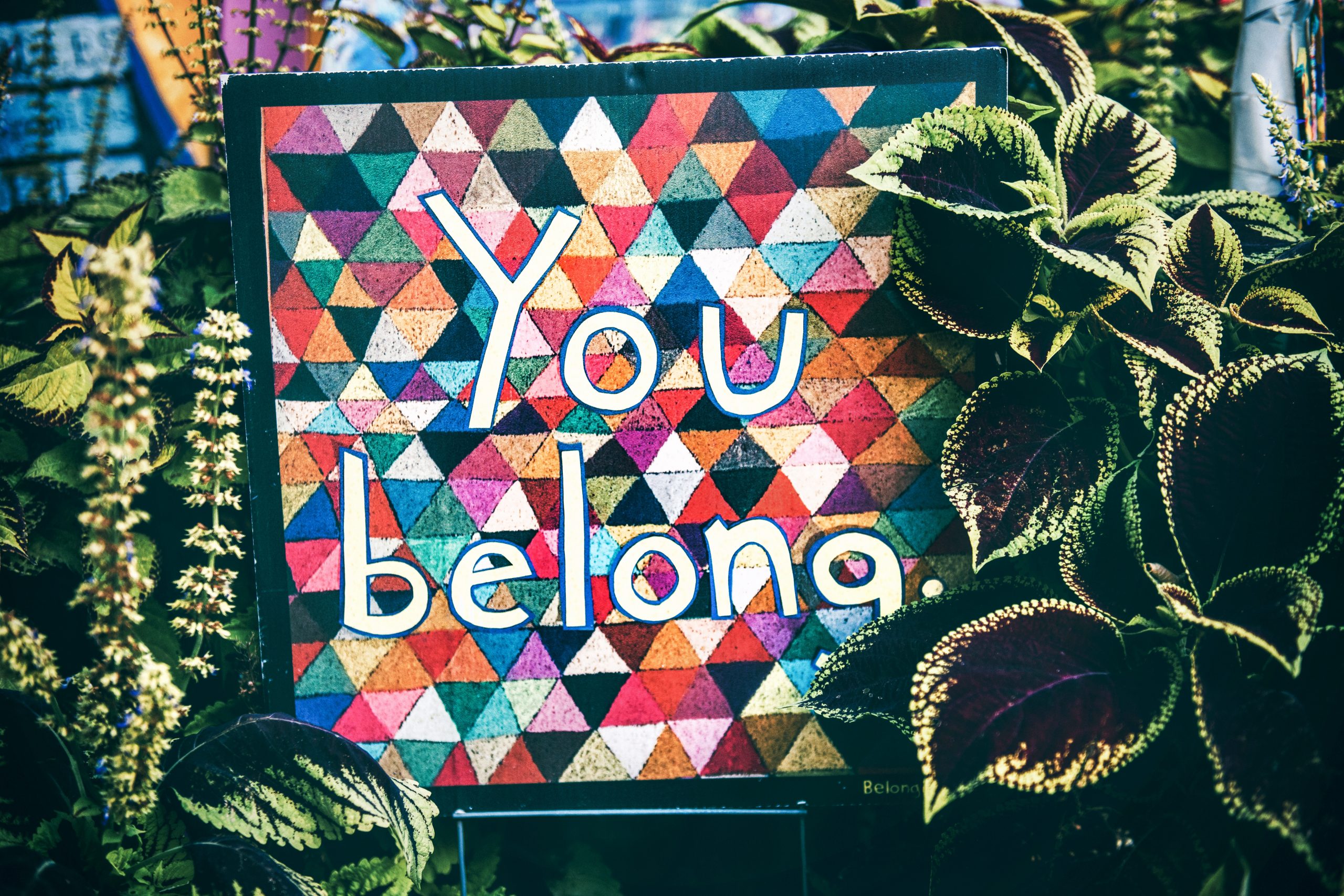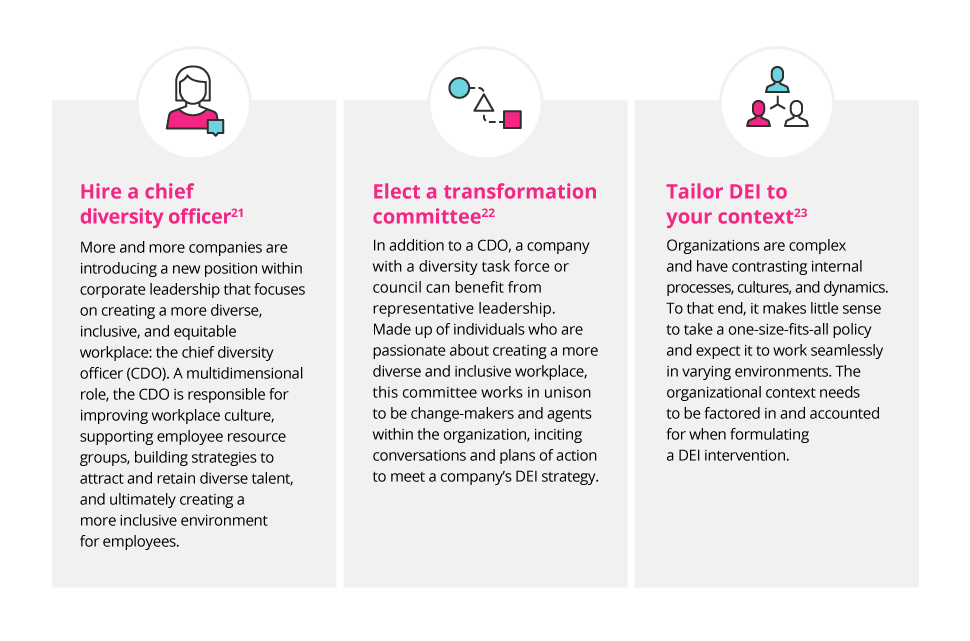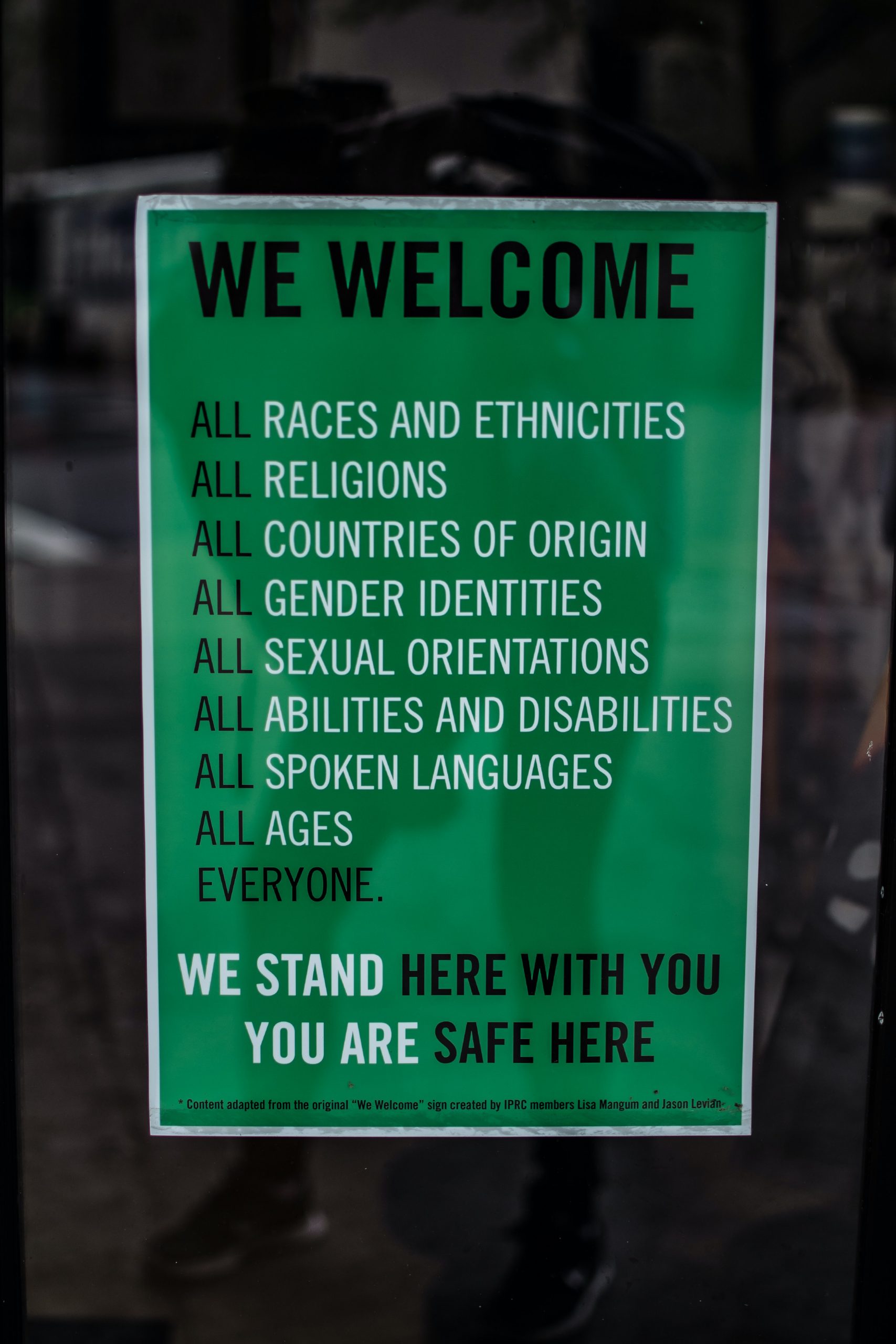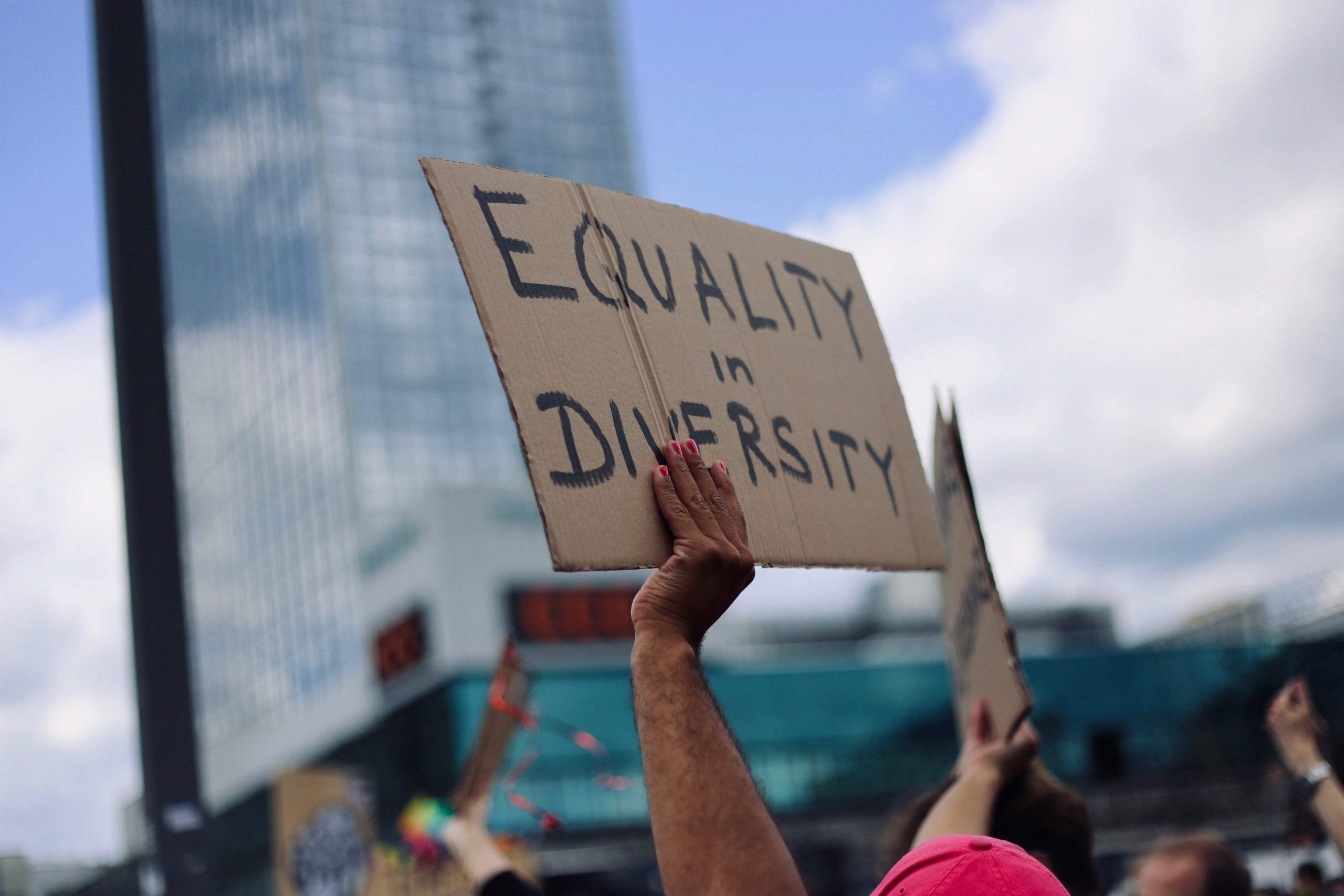Diversity, equity, and inclusion (DEI) is of crucial importance in the workplace. Interdisciplinary thinking focused on turning dialogue into action is more crucial than ever. But it takes awareness, sensitivity, and collaboration to improve structural and social impediments and achieve an enriching and humane working environment.
“Research has shown that diverse groups are more effective at problem solving than homogeneous groups, and policies that promote diversity and inclusion will enhance our ability to draw from the broadest possible pool of talent, solve our toughest challenges, maximize employee engagement and innovation, and lead by example by setting a high standard for providing access to opportunity to all segments of our society.”¹ — Barack Obama
Making DEI a strategic imperative can deliver genuine business value, help your organization attract top talent, and drive innovative results.² Successful DEI initiatives that are linked with organizational performance are shown to not only boost employee retention and foster a more innovative workforce, but also influence brand perception, corporate purpose, customer satisfaction, and stakeholder engagement. An asset for both businesses and their employees, DEI has the capacity to promote innovation, creativity, and empathy in ways that homogeneous work cultures seldom do.³
Recent years have been marked by a noted awareness of the many challenges organizations and society face in identifying and valuing a work culture’s unique differences. From the #MeToo movement to #BlackLivesMatter, DEI lives at the forefront of workplace dialogue.4 Diversity training programs are becoming more and more prevalent, with increasingly apparent benefits. These include raising awareness, bringing to light previously unspoken beliefs, and creating a shared language to discuss diversity, equity, and inclusion on a day-to-day basis — a positive and important first step in the DEI mission.5
Furthermore, data suggests that building diversity throughout an organization is becoming more of a ‘must do’ than a ‘nice to do’ for moral, social, and business reasons.6 In order to build an initiative that’s able to realize the benefits of a DEI workforce, it’s necessary to turn intent into actionable outcomes.

Diversity, equity, and inclusion in the workplace
The business sector has the power to change and contribute to a more open, diverse, and inclusive society. Impacted by major social and political changes the world over, more and more companies are taking steps to increase DEI initiatives. Yet, in most sectors, notable progress is perfunctory.7 We can only fully understand what these initiatives mean and ultimately entail when we start implementing company-wide DEI endorsements from within our own organizations.
Diversity
Founded in acceptance and respect, diversity is built on the understanding that, owing to our differences, each individual is uniquely valuable. Encompassing the dimensions of race, ethnicity, gender, and sexual orientation, diversity also acknowledges socioeconomic status, age, physical abilities, religious beliefs, political beliefs, and other ideologies.8 When these differences are explored in a safe, positive, and nurturing way, diversity is achieved. Moving beyond simple tolerance, a diverse work culture embraces and celebrates the rich differences embodied by each individual.
Equity
Equity in the workplace implies that everyone receives fair treatment and equal access to opportunities. While it’s often referred to when discussing pay, compensation is only one component of an equitable workplace. A focus on pay and other similar metrics reveals a fundamental misunderstanding of equity’s true definition and potentially goes as far as to confuse equity and equality. Although similar, their meanings are, in fact, very different.9
According to Jim Link, chief human resources officer of Randstad North America, equity and equality are necessary to realize a diverse and inclusive environment. “We’ve heard a lot about diversity and inclusion, mostly in terms of talent attraction, retention, and promotion, but we rarely discuss what a truly diverse and inclusive organization looks like from a more holistic, lasting point of view — and that’s what equity is.”10
Combatting other employee concerns, such as issues relating to managerial favoritism and equal recognition, are common leadership challenges. These can be thwarted by reaffirmation initiatives, fair promotion procedures, a commitment to transparency, and fair appeals processes.11 When all members of a diverse community have equal opportunities and support to succeed and grow, equity is achieved.12
Inclusion
Inclusion in the workplace is a result of collaborative, supportive, and respectful efforts to encourage and venerate the participation and contribution of all employees. When successfully applied, inclusion removes all barriers, discrimination, and intolerance to promote an environment in which everyone is made to feel included and supported.13
To foster inclusivity, companies must make a meaningful cultural change and take steps to remove unconscious bias when hiring new employees and nurturing existing ones.14 According to some, inclusion is the only scalable way to build diversity within an organization.15 Without thoughtful and deliberate discussion and action to cultivate an inclusive environment, all the energy and resources spent on recruiting a diverse workforce are futile.
The road to diversity, equity, and inclusion in your organization
It’s common knowledge that DEI policies make businesses more innovative and creative when compared to nondiverse teams. People with different backgrounds, experiences, and skills bring more to the table than homogeneity does. This has the potential to positively impact an organization’s bottom line.16 As evidence mounts for the positive effect of having diverse workforces, there’s also a growing need for leaders to spearhead the DEI function and align that function with the overall business strategy.17 In essence, it needs to be supported from the top down.
Despite knowing that diverse teams are key to addressing business problems, innovating better, and improving employee performance, few leaders know which practical steps to take to configure and drive diverse teams.18 To reap success, it’s necessary to invest in a wider variety of people, who have the combined knowledge, experience, and expertise to match an equally complex global milieu.
Three ways to turn insight into action
“From what we’ve learned, companies with the most successful D&I functions commit the resources to D&I and ensure it’s integrated into the culture and larger business strategy of the organization, including human resources. Alignment doesn’t happen by accident. It’s fostered deliberately through leadership, CEO support, financial accountability, and strategic communications.”19 — Tai Wingfield, SVP of United Minds and Weber Shandwick’s DEI Lead
Programs designed to increase diversity and inclusion in the workplace often fail, or run the risk of tapering out unsuccessfully.20 For DEI initiatives to be successful, employees must understand that it’s everyone’s responsibility to create an inclusive environment. Rather than being a sprint, it’s a marathon.
With the help of a chief diversity officer, transformation and DEI committees, and informed leadership, diversity programs have a greater potential to succeed. Let’s assess these three approaches in full:

5 Strategies for creating an inclusive workplace
While many organizations are now including diversity and inclusion among their principal values, the buck doesn’t stop at intent. A road of challenges remains as to how to implement company-wide tools and initiatives that address and prevent biases in the workplace, and encourage inclusivity, respect, appreciation, and recognition of all coworkers.
Here are five considerations organizations should make when creating their DEI development plan:
1. Emphasize the business case for diversity and inclusion
Companies need diverse leaders who reflect the changing business landscape. When workplace teams reflect their target customers, they’re more than twice as likely to innovate effectively for their consumers.24
2. Be conscious of unconscious bias
Implicit bias occurs when our brains make quick judgments and assess people and situations without us consciously knowing or realizing it. These biases are pervasive, and employees often possess them unintentionally. It can impede even the most diverse and inclusive workplace cultures.25
3. Practice empathetic leadership
DEI can mistakenly be treated as a single initiative driven exclusively by human resources. But for real change to happen, leaders at every level (including the entire C-suite) need to commit to the value of belonging — practically, intellectually, and emotionally.26
4. Provide sponsorship programs
Programs that accelerate the progress of minority or misrepresented groups — not just in their first weeks or months on the job, but throughout their career — can improve opportunity and growth. For example, pairing women or inexperienced people of color with more seasoned colleagues can pave the way for greater success.27
5. Communicate expectations, and hold leaders accountable for results
Leaders need to have clear expectations about DEI initiatives and be held accountable for making progress in their teams. Specifically, companies should track data on team sizes, recruiting, retention, and promotion rates. Systemic problems should also be addressed.28
Accelerate social progress with a technology-driven tool kit
Business leaders are now able to take on more responsibility in addressing social justice by employing an integrated approach to solutions-driven DEI fulfillment plans. For example, companies can utilize new technologies to create safe, open, and inclusive workspaces.
According to the World Economic Forum’s ‘Diversity, Equity and Inclusion 4.0 Toolkit,’ new technologies can help create workplaces that are fair, equitable, and diverse, and accelerate social progress plans with practical frameworks.29
Living in the Fourth Industrial Revolution — accelerated by the COVID-19 crisis — technological solutions can potentially implement best practices at scale and empower new practices that were previously implausible. For instance, technologies that utilize new analytic and data science capabilities and machine learning can process job applications at a higher speed and in greater detail. New technologies can also identify and moderate bias, improve transparency and visibility, and support employee training.30 As businesses start to recover from the COVID-19 pandemic, and workplaces find their ‘new normal,’ they have a unique opportunity to measure and instill DEI from the onset.
However, regardless of its merits, technology alone cannot create fair, equitable, and diverse workplaces. It requires an integrated strategy that blends new technological tools with a human-centric sentiment.
Driving an effective DEI program is no small feat and requires inclusive, strong, and consistent leadership. But such initiatives should no longer be a business choice. It should be a set moral standard for managing a 21st-century organization.

Originally published on GetSmarter.com.
Sources
1 Smith, M., Weidman Powers, L. (Nov, 2016). ‘Raising the floor: sharing what works in workplace diversity, equity, and inclusion.’ Retrieved from Obama White House.
2 Florentine, S. (Feb, 2019). ‘Diversity and inclusion: 8 best practices for changing your culture.’ Retrieved from CIO.
3 Eswaran, V. (Apr, 2019). ‘The business case for diversity in the workplace is now overwhelming.’ Retrieved from the World Economic Forum.
4 Washington, E. and Patrick, C. (Sep, 2018). ‘3 requirements of a diverse and inclusive culture.’ Retrieved from Gallup.
5 Bourke, J. and Dillon, B. (Jan, 2018). ‘The diversity and inclusion revolution: eight powerful truths.’ Retrieved from Deloitte.
6 Washington, E. and Patrick, C. (Sep, 2018). ‘3 requirements of a diverse and inclusive culture.’ Retrieved from Gallup.
7 Pedulla, D. (May, 2020). ‘Diversity and inclusion efforts that really work.’ Retrieved from Harvard Business Review.
8 (Nd). ‘Definition for diversity.’ Retrieved from Queensborough Community College. Accessed 02 July 2020.
9 Link, J. (Aug, 2019). ‘The difference between workplace equity and equality, and why it matters.’ Retrieved from Forbes.
10 Link, J. (Aug, 2019). ‘The difference between workplace equity and equality, and why it matters.’ Retrieved from Forbes.
11 Erb, M. (Nd). ‘Four ways to foster fairness in the workplace.’ Retrieved from Entrepreneur. Accessed 11 July 2020.
12 Link, J. (Aug, 2019). ‘The difference between workplace equity and equality, and why it matters.’ Retrieved from Forbes.
13 Mondal, S. (Jun, 2020). ‘Diversity and inclusion: a complete guide for HR professionals.’ Retrieved from Ideal.
14 Tans, G. (Jan, 2020). ‘Why diversity and inclusion should not be a numbers game.’ Retrieved from the World Economic Forum.
15 Yu, P. (Jan, 2018). ‘What should inclusion really look like in the workplace?’ Retrieved from Forbes.
16 Street, T. (Mar, 2019). ‘Why diversity and inclusion is important in the workplace – infographic.’ Retrieved from Tribunal Claim.
17 (Sep, 2019). ‘Chief Diversity Officers today: paving the way for diversity & inclusion success.’ Retrieved from Weber Shandwick.
18 (Sep, 2019). ‘“Diversity” is more than a buzzword. It’s key to solving major workplace problems.’ Retrieved from the World Economic Forum.
19 (Sep, 2019). ‘Chief diversity officers today: paving the way for diversity & inclusion success.’ Retrieved from Weber Shandwick.
20 Pedulla, D. (May, 2020). ‘Diversity and inclusion efforts that really work.’ Retrieved from Harvard Business Review.
21 Gassam, J. (Apr, 2019). ‘Why chief diversity officers often fail.’ Retrieved from Forbes.
22 Gassam, J. (Apr, 2019). ‘Why chief diversity officers often fail.’ Retrieved from Forbes.
23 Pedulla, D. (May, 2020). ‘Diversity and inclusion efforts that really work.’ Retrieved from Harvard Business Review.
24 Jain-Link, P., Taylor Kennedy, J., and Bourgeois, T. (Jan, 2020). ‘5 Strategies for creating an inclusive workplace.’ Retrieved from Harvard Business Review.
25 Agarwal, P. (Aug, 2018). ‘Here is why organisations need to be conscious of unconscious bias.’ Retrieved from Forbes.
26 Florentine, S. (Feb, 2019). ‘Diversity and inclusion: 8 best practices for changing your culture.’ Retrieved from CIO.
27 Jain-Link, P., Taylor Kennedy, J., and Bourgeois, T. (Jan, 2020). ‘5 Strategies for creating an inclusive workplace.’ Retrieved from Harvard Business Review.
28 Taplett, F., Garcia-Alonso, J., Krentz, M. et al. (Mar, 2020). ‘It’s frontline leaders who make or break progress on diversity.’ Retrieved from BCG.
29 (Jun, 2020). ‘Diversity, equity and inclusion 4.0.’ Retrieved from the World Economic Forum.
30 (Jun, 2020). ‘Diversity, equity and inclusion 4.0.’ Retrieved from the World Economic Forum.
